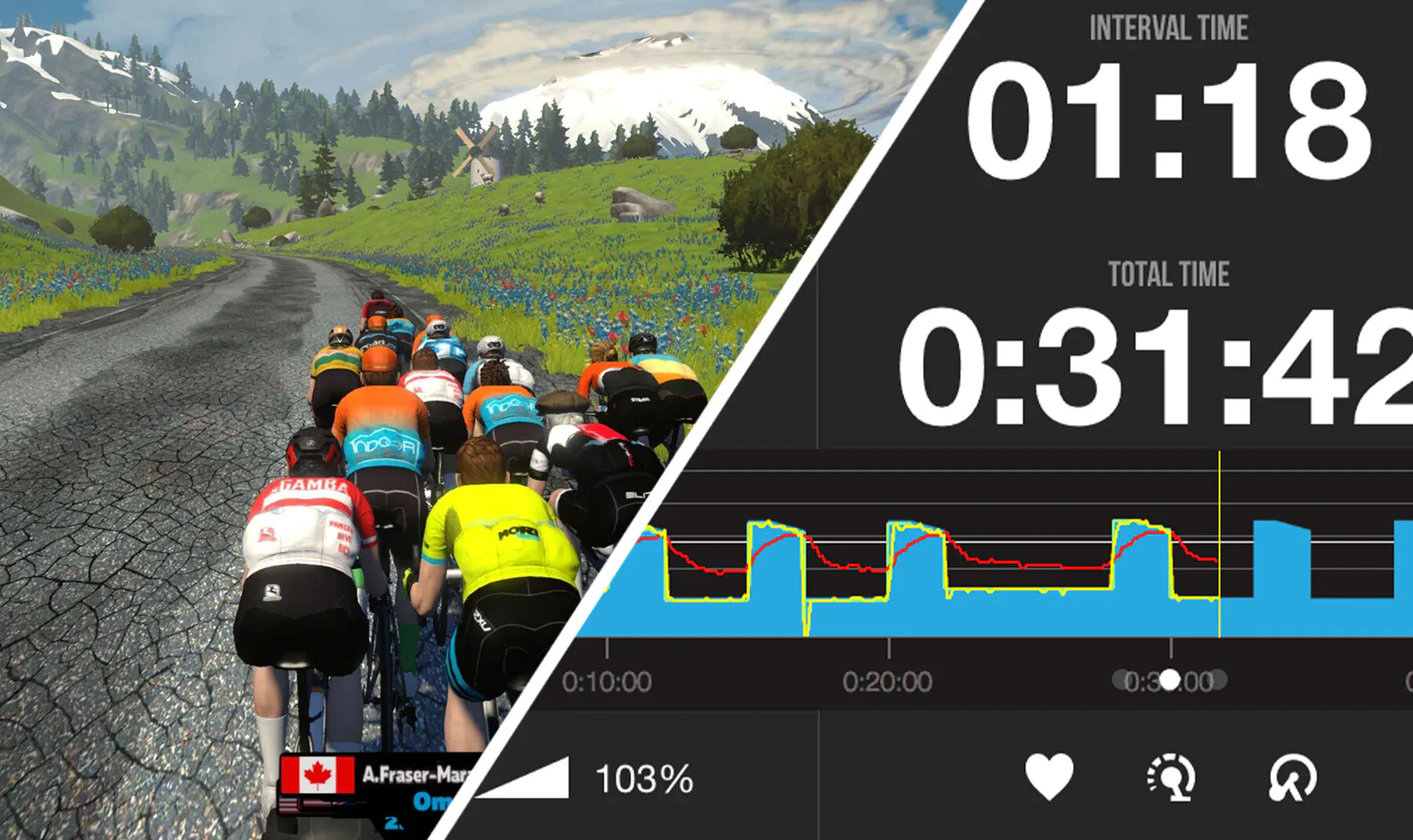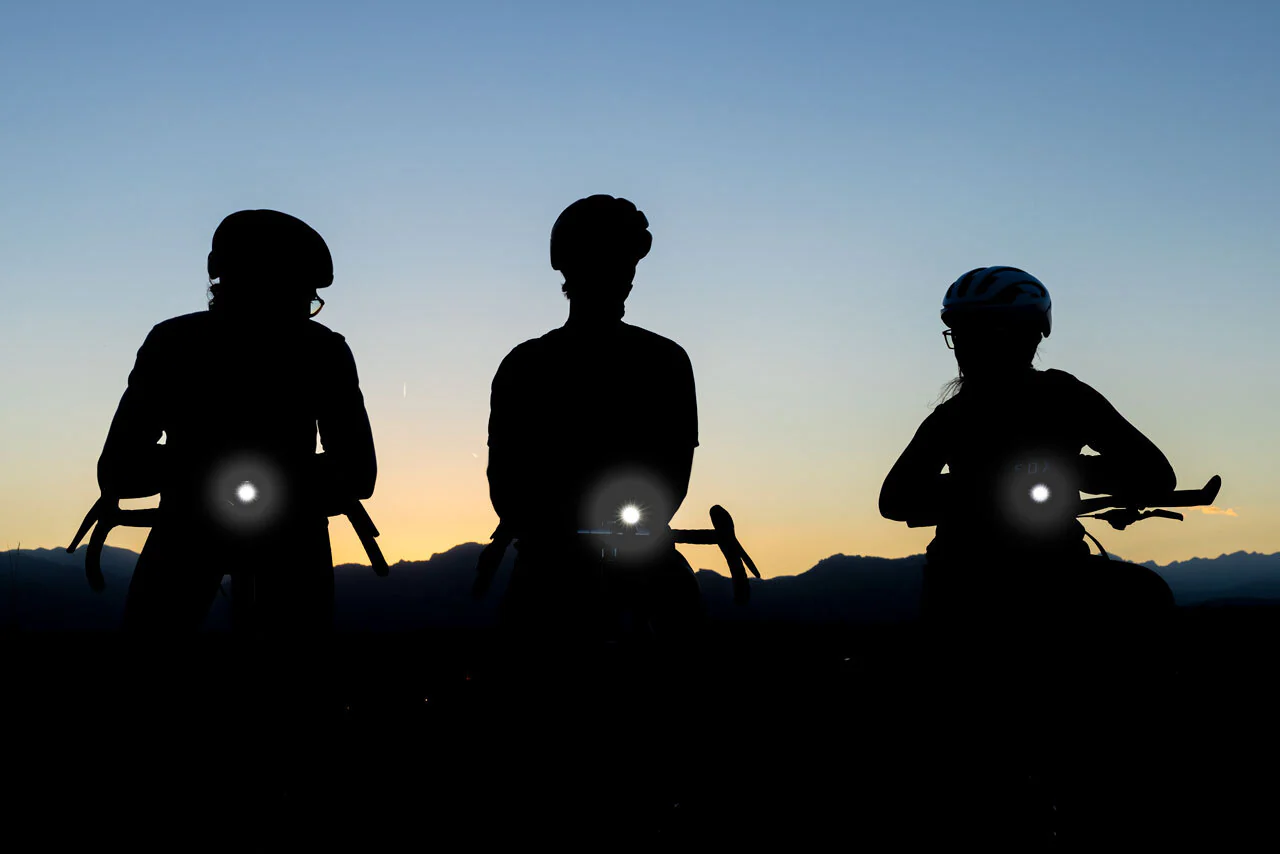When April Lee isn’t ripping singletrack or busting a move at a bike park, she’s probably coaching mountain bikers of all ages and abilities. But when she’s not doing that, she’s also an ER nurse in Salida, Colorado. Lee has been on more epic mountain bike adventures than she can recount, and she’s also treated a fair number of bike injuries at the hospital. Some things can’t be prevented — mountain biking comes with inherent risks.
But many things can be avoided, or made less severe, through good preparation. Lee says that especially when playing in the mountains at altitude, being prepared for seemingly unlikely hazards, can save your life.

Lee is always prepared when she rides into the high mountains.
Lee recommends that all mountain bikers keep essentials in their trail pack in three categories: warmth, medical issues, and bike tools. Even though Lee considers herself a minimalist packer, here’s a breakdown of what Lee always has in her bag.
[button]Shop mountain bikes[/button]
Medical kit for mountain bikers
 For Lee, first-aid supplies are an obvious must-have. She says easy-to-pack items often get left behind by many because many riders just don’t consider the worst-case scenario, even on a short ride. Here’s what she brings.
For Lee, first-aid supplies are an obvious must-have. She says easy-to-pack items often get left behind by many because many riders just don’t consider the worst-case scenario, even on a short ride. Here’s what she brings.
- A variety of Bandaids and a travel-sized bottle of antibiotic ointment. The most common fall usually ends with a bloody knee or elbow. Even if you’ll be off the trail soon, getting it quickly cleaned and bandaged is a good idea (and it avoids getting blood on clothes).
- Tweezers. The other part about the most common fall in the western states, is that it’s usually into cactus. Pulling needles out of hands and knees is sometimes necessary in order to ride home. (Yet another reason for good gloves and knee pads!)
- Total adult dose, 50mg, chewable children's Benadryl (#4) for allergic reactions.
- Ibuprofen, Tylenol, Aspirin.
- A few strips of stretchy wrap that can be used with a stick to create a splint, or can be used to hold a joint in place.
- Honey sticks. Hopefully you’re carrying nutrition, but it’s good to have some emergency sugar in case you get hypoglycemia.
- Trauma scissors. You may need to cut off something — clothing or something restrictive to an area that is swelling.
- Safety pins. Easily make an arm sling out of any long-sleeve shirt with some pinning- instead of carrying a triangle bandage.
- A bit of duct tape — it is amazing and has a million uses.
- Hand sanitizer.
- Water purification tablets.
- Put it all in a ZipLoc bag so it’s easy to grab and pack.
Lee emphasizes that this is a minimalist approach that is all about temporary fixes to first aid emergencies. “If I needed more dressings because someone is really bleeding, then I’m taking someone’s clothes and cutting them up to use as a dressing — [even though] nothing about this would be sterile or really even that clean — my background as an ER nurse for 20+ years and a previous flight nurse on a helicopter at scene calls was all about packing quickly to get them in the air to definite care,” she says.
If someone is really hurt on the trail, your top priority should be getting their condition temporarily stabilized so you can call 911 and get them into the hands of medical professionals as quickly as possible.
Tools for trailside bike repairs
 Lee likes to carry a pretty standard tool kit, along with both a hand pump and CO2. Her theory is, a couple more ounces in tools is better than walking down the mountain dragging a bike because of a fairly minor mishap.
Lee likes to carry a pretty standard tool kit, along with both a hand pump and CO2. Her theory is, a couple more ounces in tools is better than walking down the mountain dragging a bike because of a fairly minor mishap.
- Hand pump
- Multi-tool
- Chain quick link and chain breaker
- Tube
- Tubeless valve
- CO2
- Tubeless tire plug kit
- Chain lube
- Zip-ties
- Dollar bills
Lightweight ways to stay warm in an emergency
 For instance, many people come to Salida to ride the Monarch Crest. It’s an epic ride, with several different descent options. Almost all of it is above treeline. The weather can be sunny, warm, perfectly clear, and calm in Salida, but just 20 miles up the road, even in August, there can be snow, wind, and below-freezing temperatures.
For instance, many people come to Salida to ride the Monarch Crest. It’s an epic ride, with several different descent options. Almost all of it is above treeline. The weather can be sunny, warm, perfectly clear, and calm in Salida, but just 20 miles up the road, even in August, there can be snow, wind, and below-freezing temperatures.
“If I’m descending Monarch and my hands, feet, and head are wet and cold, it’s not going to go very well,” Lee says.
For her, and most mountain bikers, weight is important. It would be great to always have multiple layers, but no one wants to carry all that stuff unless it’s absolutely necessary. When the weather shifts unexpectedly, keeping your hands, feet, and head dry and warm should be your biggest concern. Here’s how she packs without packing on the weight.
- Latex gloves. Yes the same kind she wears at the hospital. These might seem inconsequential, but if you put them on under your riding gloves, they keep moisture out and hold heat in. And they weigh next to nothing.
- A shower cap. Ridiculous, right? Well, if it starts snowing on you at 11,000 feet, it could make all the difference. Put it on under your helmet, and again, it keeps water out, keeps the heat in, and adds no weight to your pack.
- Plastic bags. Produce bags, burrito bags, anything that your foot fits into. Sensing a theme here? Put them on your feet, then put your socks over them. They keep the water out, and instantly start warming your feet up. As long as you have a waterproof barrier, you’re going to be in much better shape.
- Hot Hands, or a similar air-activated warmer. These are great for warming up areas that are especially cold. Stuff them in your gloves, shoes, or even bibs.
Conclusion
Lee says that over the years she’s learned a lot of lessons and vowed to always carry certain things. It’s all about being resourceful and prepared. “I had a super bloody and dirty wet trauma patient once, and the only way I could get his IVs to stay in was to duct tape them to his arms — again definitely not clean or sterile and the adhesive makes a mess,” but she got the job done. And so duct tape goes in her bag.
Maybe you don’t need to carry everything that an ER nurse carries for high-mountain riding, but it wouldn’t hurt. Remember, your best bet is to call 911 and get professional help as soon as you are off the trail. Above all, plan ahead — as always, it’s better safe than sorry.
We meticulously (and independently) pick every product, and if you purchase through our links we may earn a commission.

























